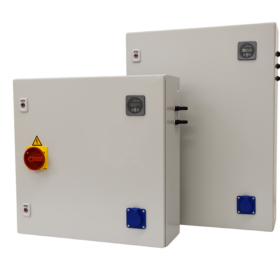Scientists create setup to measure wave-induced power losses in floating PV
Researchers have measured the power loss of a 50 W panel stationed in a 30-meter wave tank. Based on ten different scenarios, they were able to draw an empirical equation for the prediction of power loss, with the highest loss being measured at 12.7%.
Hungary’s residential PV subsidy scheme draws 20,000 applicants
The Hungarian government says 20,000 households have signed up for its PV subsidies scheme, which offers up to HUF 5 million ($14,125) per home installation. The original HUF 75.8 billion budget was increased by HUF 30 billion in July.
Solar cabinet for water disinfection systems
German fluid management company Lutz-Jesco introduced a system aimed at supporting pumping and water disinfection in cases of blackouts. The hub is preconfigured to work with solar panels, a battery charge controller, an inverter, and cabling.
New deep learning tech uses electroluminescence images to identify defective PV cells
The novel method uses the YOLOv8 framework, integrating an attention mechanism and a transformer model. It was tested on a dataset of 4,500 electroluminescence images against several other models and its results were up to 17.2% more accurate.
Using surplus PV power for seasonal underground thermal storage
Scientists have proposed a new system that uses surplus PV energy in the spring and the autumn to charge up underground thermal energy storage for later use in the summer and winter. They have simulated it on a school facility in Seoul, with a few optional configurations for thermal storage. Power savings were up to 39%.
Optimizing bifacial solar panels for floating PV applications in tropical freshwater
New research from India shows how bifacial solar modules should be deployed to achieve strong performance in floating PV projects planned on tropical freshwater. Their experimental setup demonstrated that higher efficiency gains are achievable by gauging panel height, water depth, and tilt angle.
Mimicking chimpanzees’ hunting behavior to improve PV prediction models
Researchers have used the chimp optimization algorithm to optimize the hyperparameters of five PV power yield prediction machine learning models. This algorithm is based on the cooperative hunting behavior of chimpanzees in nature, mimicking the way they work together to target prey.
Jackery, Geneverse present new residential energy storage system
The two US-based companies are showcasing their new home energy system with up to 123.2 kWh of storage at RE+ 2024 event in the United States. The new product has four MPPTs, with a max current of 16 A per string.
Namibian utility secures financing for 100 MW of solar
Namibia Power Corp. (NamPower) has secured a loan from German state-owned development bank KfW to expand the planned Rosh Pinah project in Namibia from 70 MW to 100 MW. The NAD 1.3 billion ($72.6 million) loan will cover 80% of the solar project’s costs.
New algorithm enables cost-optimized operation of residential heat pumps
Researchers in Austria have developed a new predictive control algorithm that can reportedly improve comfort levels in houses equipped with heat pumps. The algorithm also enables price predictions based on analysis of day-ahead electricity prices.










